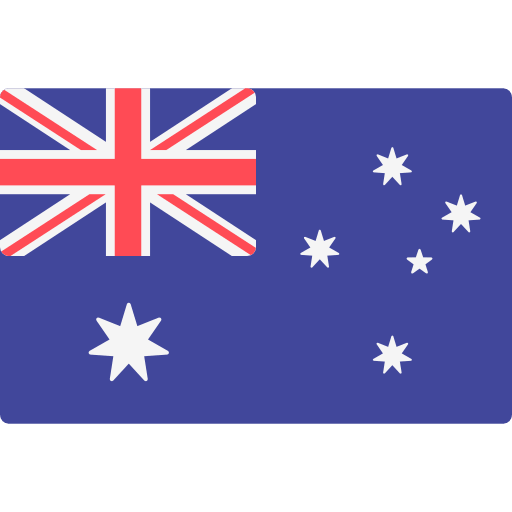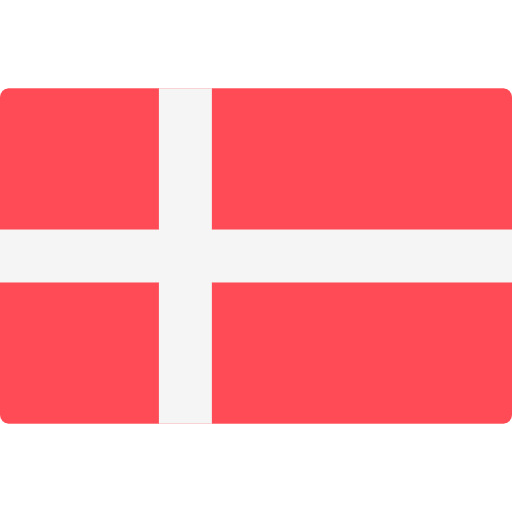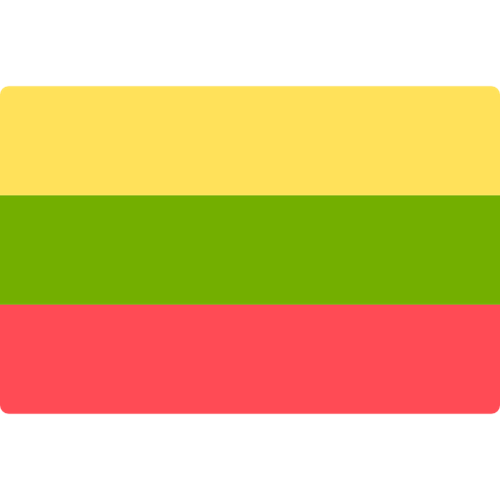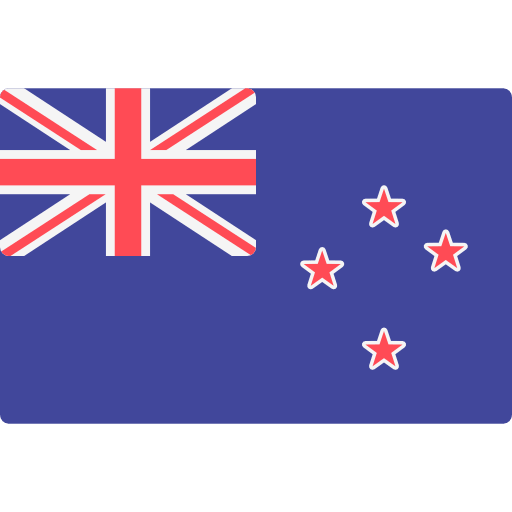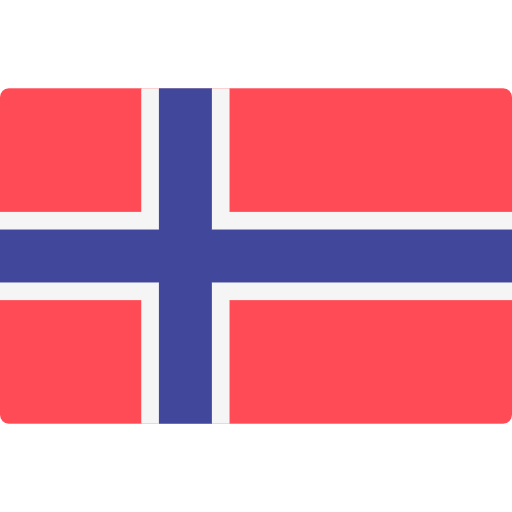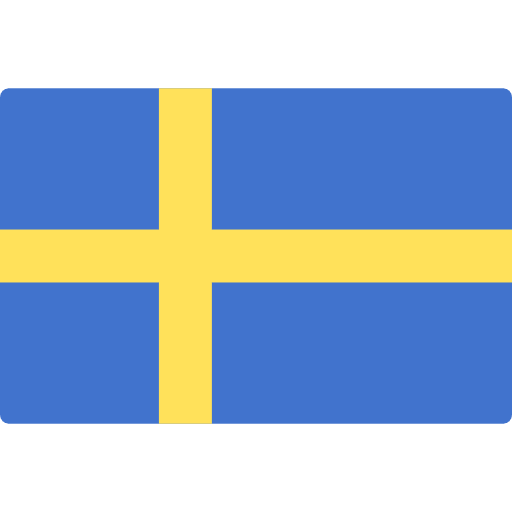Eurofins Toys & Hardlines Monthly Bulletin (July 2025)


New additions to the Candidate List of Substances of Very High Concern (SVHCs)
On 25 June 2025, the ECHA (European Chemicals Agency) released the new Candidate List of SVHCs with the addition of three new substances. The current list of SVHCs now contains 250 substances.
The table below indicates the latest substance addition:
|
Nº |
Substance name |
EC number |
CAS number |
Reason for inclusion |
Example of use(s) |
|
1 |
1,1,1,3,5,5,5-heptamethyl-3-[(trimethylsilyl)oxy]trisiloxane |
241-867-7 |
17928-28-8 |
Very persistent and very bioaccumulative, vPvB (Article 57e) |
Used as a laboratory reagent, in cosmetics and personal care products and perfumes and fragrances. |
|
2 |
Decamethyltetrasiloxane |
205-491-7 |
141-62-8 |
Very persistent and very bioaccumulative, vPvB (Article 57e) |
Used in cosmetics and personal care products, in lubricants and greases and in automotive care products. |
|
3 |
Tetra(sodium/potassium) 7-[(E)-{2-acetamido-4-[(E)-(4-{[4-chloro-6-({2-[(4-fluoro-6-{[4-(vinylsulfonyl)phenyl]amino}-1,3,5-triazine-2-yl)amino]propyl}amino)-1,3,5-triazine-2-yl]amino}-5-sulfonato-1-naphthyl)diazenyl]-5-methoxyphenyl}diazenyl]-1,3,6-naphthalenetrisulfonate; Reactive Brown 51 |
466-490-7 |
- |
Toxic for reproduction (Article 57c) |
Used in textile treatment products and dyes. |
Legal obligations for companies using SVHC substances include:
- Suppliers provide customers and consumers with enough information to allow for safe use of products that contain a substance of very high concern (SVHC) above a concentration of 0.1 % (weight by weight).
- Importers and producers of these products must notify the ECHA if their article contains SVHC substances above a concentration of 0.1% weight by weight (w/w) and the substance is present in those products in quantities totalling over 1 tonne per producer or per importer per year. The notifications must be submitted within six months from the date it that the substance is included in the list.
- Suppliers of substances on the Candidate List, supplied either on their own or in mixtures, must provide their customers with a safety data sheet.
- Under the Waste Framework Directive (Directive 2008/98/EC on waste- WFD), any supplier of an article containing a substance of very high concern (SVHC) in a concentration above 0.1% weight by weight (w/w) on the EU market is required to submit a SCIP Notification on that article to ECHA, as of 5 January 2021. SCIP is the database holding information on Substances of Concern in articles, as such or in complex objects (products), established under the WFD. The SCIP database complements the existing notification obligations for Candidate List substances in articles subject to REACH regulation and its related communication through the supply chain, according to Articles 7 (2) and 33 respectively.
Click here to access the official List from ECHA’s website.
The table below summarises the most recent standard updates and upcoming dates of withdrawal (non-exhaustive):
(*) Date of withdrawal: The latest date by which national standards conflicting with a European Norm (EN) (and Harmonisation Document (HD) for the European Committee for Electrotechnical Standardisation (CENELEC)) must be withdrawn.
(**) Date of availability: The date when the definitive text in the official language versions of an approved CEN/CENELEC publication is distributed by the Central Secretariat.
|
The European Committee for Standardisation (CEN)/CENELEC |
|||
|
Reference |
Title |
Date of withdrawal (*) |
Supersedes |
|
Guidelines to create a Digital Product Passport - the EU project CircThread experience |
21 May 2025 |
|
|
|
Swimming pool equipment - Part 4: Additional specific safety requirements and test methods for starting platforms |
30 November 2025 |
||
|
Swimming pool equipment - Part 3: Additional specific safety requirements and test methods for inlets and outlets and water/air based water leisure features installed in pools for public use |
30 November 2025 |
||
|
Candle accessories - Specification for fire safety and product safety labels |
30 November 2025 |
||
|
Plastics - Sorted plastics wastes - Part 2: Quality grades of sorted polyethylene (PE) wastes and specific test methods |
30 November 2025 |
|
|
|
Plastics - Sorted plastics wastes - Part 3: Quality grades of sorted polypropylene (PP) wastes and specific test methods |
30 November 2025 |
|
|
|
Plastics - Sorted plastics wastes - Part 4: Quality grades of sorted poly(ethylene terephtalate) (PET) wastes and specific test methods |
30 November 2025 |
|
|
|
Plastics - Sorted plastics wastes - Part 5: Quality grades of sorted poly(vinyl chloride) (PVC) wastes and specific test methods |
30 November 2025 |
|
|
|
Plastics - Sorted plastics wastes - Part 6: Quality grades of sorted polystyrene (PS) wastes and specific test methods |
30 November 2025 |
|
|
Publications on European Commission initiatives
The table below summarises recent publications on European Commission initiatives:
| Date | Title |
|
27 May 2025 |
The purpose of this initiative is to add 'local space heaters' to Annexe II on the repair of goods. The repairability requirements for local space heaters have been established under Commission Regulation (EU) 2024/1103. The European Commission is preparing the draft act. |
|
12 June 2025 |
Sustainable products – disclosure of information on unsold consumer products This initiative will specify:
The feedback period closed on the 10 July 2025. |
|
19 May 2025 |
Consumer Agenda 2025-2030 and action plan on consumers in the Single Market The new consumer policy strategy is intended to:
The strategy contains a list of measures to be taken in 2025-2030, including:
The public consultation period is open until 31 August 2025. |
Ecodesign and Energy Labelling Working Plan for 2025-2030
Starting June 2025, new EU Ecodesign and Energy Labelling Regulations apply to smartphones, tablets, and cordless phones, aiming to boost durability, energy efficiency, and repairability. Devices must now meet standards like resistance to drops and water, batteries lasting 800+ charge cycles, software updates for 5+ years, and access to spare parts for at least 7 years.
A new energy label includes energy use, durability, and a repairability score (A to E) to help consumers make informed choices. These rules are expected to cut energy use by 2.2 TWh and save EU consumers up to €20 billion by 2030, while promoting circular economy goals. Developed under the 2020 Circular Economy Action Plan, the regulations support the EU’s broader green and digital transitions.
For more information, please visit the European Commission website here.
Draft executive order on food contact materials
On 23 May 2025, the public consultation on the draft executive order on food contact materials and the penal provisions for violations of related EU legislation was closed.
With this draft, the Danish Food Safety Authority will amend requirements affecting food contact materials such as cellulose films, ceramics, enamelled articles, glassware, paper, and cardboard, among other changes. It will repeal Executive Order No. 681 of 25 May 2020, on FCMs.
The expected date of application is 1 January 2026.
For more information, please visit the Danish hearing portal here.
New requirements concerning packaging and other waste
On 4 June 2025, the Danish Ministry of the Environment and Gender Equality submitted to the European Commission a text related to amending an order on certain requirements concerning packaging, extended producer responsibility for packaging, and other waste collected with packaging waste (2025/0279/DK).
The main points of this order are:
- Beverage containers and cups for beverages are not exempt from rules.
- The obligation for producers to pay towards the collection of waste from municipalities applies to both collection and transport.
- Historical deadlines are deleted, and references updated, in certain provisions and annexes.
- Added requirements for packaging, extended producer responsibility for packaging and other waste collected with packaging waste.
- A few minor clarifications and consequential corrections.
In May 2024, the State of Vermont signed S.25 into law, launching its first comprehensive PFAS ban in a wide range of consumer products, including aftermarket stain and water-resistant treatments, artificial turfs, class B firefighting foams, cookware, cosmetics and menstrual products, food packaging, incontinency protection products, juvenile products, residential rugs and carpets, ski waxes, and textiles.
On 11 June 2025, Vermont approved H.238 to amend its PFAS law by broadening the scope, clarifying definitions and refining timelines.
Here is a summary of the amendments:
New product categories
- Cleaning products (general cleaners, hand soaps) – intentionally added PFAS prohibited starting 1 July 2027
- Dental floss – intentionally added PFAS prohibited starting 1 July 2027
- Fluorine-treated containers – intentionally added PFAS prohibited for sale or distribution starting 1 July 2027; intentionally added PFAS prohibited for manufacture starting 1 July 2032
- Personal protective equipment (PPE) – intentionally added PFAS requires written notice from 1 July 2025; intentionally added PFAS prohibited starting 1 July 2029
Revised timelines
- Cookware ban delayed by 2.5 years; originally set for 1 January 2026, now 1 July 2028
FDA issues letter concerning palm leaf dinnerware
On 8 May 2025, the U.S. Food and Drug Administration (FDA) issued a letter to inform the industry that dinnerware such as bowls, plates, cups and cutlery manufactured from the sheath of leaves from the Areca catechu plant (often referred to as “palm leaf plates” or “palm leaf dinnerware”) may not lawfully be offered for sale in the U.S, due to its potential to leach toxic chemicals into food. These chemicals, known as alkaloids, have been shown to cause negative health effects when ingested, including cancer.
The FDA historically considered plant-derived materials safe for food-contact use, but recently determined that the use of the sheath of Areca catechu palm leaves in food contact articles does not meet the statutory criteria for general recognition of safety. The FDA has placed all dinnerware products manufactured from the sheath of leaves from the Areca catechu plant on an import alert (IA 23-15).
The table below summarises some recent ASTM standards updates:
|
Reference |
Title |
|
ASTM F2601-25 |
Standard Specification for Fire Safety for Candle Accessories |
|
ASTM D8608-25 |
Standard Test Method for Flame Resistance of Leather |
The Competition Bureau of Canada issues final guidelines on environmental claims
The Competition Bureau of Canada has published its final environmental claims guidelines, following two rounds of public consultation. These guidelines are intended to help businesses comply with the Competition Act, particularly considering new anti-greenwashing provisions that came into effect on 20 June 2024.
This bulletin provides an overview of key updates and their implications for businesses making environmental claims in Canada.
What is considered an environmental claim?
The Bureau defines “environmental claims” as any representation related to the environment made to promote a product, service, or business.
“Greenwashing” refers to claims that mislead consumers by exaggerating, fabricating, or failing to properly support environmental benefits. These practices are now directly addressed under the revised Competition Act.
New provisions in the Competition Act
Two new provisions were introduced to directly address greenwashing:
- Product environmental claims: Claims about a product’s benefits to the environment, such as protecting ecosystems, restoring resources, or mitigating climate impact, must be backed by adequate and proper testing conducted before the claim is made.
- Business or operational environmental claims: Claims about a business’s operations or goals (e.g., "carbon neutral supply chain") must be substantiated using reliable evidence grounded in an internationally recognised method.
These new provisions build upon existing deceptive marketing provisions under the Competition Act, which prohibit false or misleading representations and require product performance claims to be based on adequate and proper testing.
Key principles for making environmental claims
To ensure compliance with the Competition Act and reduce the risk of greenwashing, the Competition Bureau of Canada recommends that businesses consider the following principles when making environmental claims:
- Be truthful and not misleading: Ensure that environmental claims are accurate and not misleading in their overall impression. According to the Bureau’s guidance, even a technically correct statement may still mislead consumers if it implies a broader or more significant benefit than what is substantiated. Disclaimers or fine print should not be used to correct an otherwise misleading message.
- Back claims with proper testing or evidence: Product-related claims should be supported by adequate and proper testing conducted in advance. For claims related to business operations or goals, the Bureau recommends using internationally recognised methodologies and sufficiently rigorous evidence to support the claim.
- Use clear and specific language: Avoid vague or general terms such as "green" or "eco-friendly" unless clearly defined. The Bureau recommends that claims should identify what specifically is being referred to, whether a component, product, service, or the entire business activity.
- Avoid overstating or exaggeration: The Bureau’s guidance discourages overstating minor environmental benefits or implying impacts that cannot be adequately supported. Claims should remain proportionate and fact-based.
- Clarify comparative claims: When making comparisons (e.g., to earlier products or competitors), the Bureau recommends that businesses specify what is being compared, the basis for the comparison, and any relevant context or conditions.
- Support future-oriented claims with credible plans: Future claims (such as “net-zero by 2050”) should be substantiated with a credible and verifiable plan, including interim targets and steps already underway. According to the Bureau, such claims should be grounded in an internationally recognised method.
The Competition Bureau of Canada strongly encourages all businesses to review the complete guidelines before making or revising any environmental marketing claims. The final guidelines are available on the Government of Canada’s website here.
GB 18580-2025 the mandatory formaldehyde emission limit standard of wood-based panels and finishing products published
On 30 May 2025, along with the #12 National Standard Announcement release by the SAC (Standardization Administration of China), a new edition of GB 18580 standard was published.
GB 18580-2025 will go into force from 1 June 2026, and the 2017 edition will be withdrawn then.
Compared with the 2017 edition, here are the main changes:
- Changed the scope of this document;
- Changed normative references, with reference to GB/T 18259-2018;
- Added requirements for formaldehyde release limits and labelling in finished and unfinished man-made boards and their products (standard sections 4.1 & 4.2);
- Set two different formaldehyde emission grades, E1 and E0
- Various types of wood-based panels and finishing products for indoor used, including fiberboard, particleboard, plywood, blockboard, reconstituted decorative materials, laminated veneer lumber, engineered wood, veneered artificial boards, wooden floors, wooden wall panels, wooden doors and windows, stone-plastic composite materials, and wood-plastic composite materials.
- Changed the test method for the 1m3 climate chamber method;
- Added re-inspection requirements;
- Removed inspection report requirements;
- Added the small chamber method for testing formaldehyde release in production quality control (see standard Appendix A).
|
No. |
Product Type |
Limit (mg/kg) | Scope | Emission Mark | |
| 1 |
Decorated wood-based panels and their products |
Including impregnated paper laminated wood flooring, solid wood composite flooring, wood-plastic flooring, bamboo flooring, and various types of flooring; impregnated film paper surface artificial boards, painted surface artificial boards, PVC surface artificial boards, wooden doors, and various types of soft and hard surface artificial boards and their products. |
≤0.050mg/m3 |
Can be used directly indoors. |
E0 |
|
2 |
Unfinished decorated wood-based panels and their products |
Including fibreboard, particleboard, oriented strand board, engineered wood, laminated wood, decorative veneer-faced artificial board, plywood, medium-density fibreboard, and other undressed engineered boards and their products. |
≤0.124mg/m3 |
Achieving E0 level or treated to reach E0 level through finishing, it can be used directly indoors. |
E1 |
According to the test specimen balance treatment specified in GB 18580-2025, test samples are stored at a temperature of (23±1)℃ and a relative humidity of (50±5)% for 7 days ± 3 hours, with a minimum distance of 25 mm between the samples.
The testing lead time has been shortened by approximately 7 days with the 2017 edition “(15±2) d” on balance treatment, which is effectively reducing the economic and time costs of formaldehyde release testing for enterprises and quality inspection agencies.
Implementation of GB 18584-2024 limit of harmful substances of furniture
From 1 July 2025, the mandatory furniture GB 18580-2024 standard will come into force. This standard will replace GB 18584-2001 and GB 28481-2012. This standard specifies the terms and definitions, requirements and test methods and test results of hazardous substances in furniture.
This standard applies to all types of furniture products.
Compared with GB 18580-2001 edition, here are the main changes:
- The terms and definitions related to formaldehyde emission in the GB 18584-2001 standard have been deleted, and the requirements and testing methods for formaldehyde emissions have been revised (see sections 4.1, Appendix D, Appendix E, Appendix F, and Appendix G, as well as chapters 4 and 5.1 of GB 18584-2001);
- The terms and definitions, requirements, and testing methods for soluble heavy metals in the GB 18584-2001 standard have been removed;
- A definition, requirement, and testing method for migratable harmful elements have been added (see sections 3.2 and 4.2);
- Requirements and testing methods for benzene, toluene, xylene, total volatile organic compounds, radioactive nuclides, and dimethyl fumarate have been added (see sections 4.1 and 4.3);
- The inspection rules in the GB 18584-2001 standard have been deleted.
Compared with GB 28481-2012 edition, here are the main changes:
- The definition of plastic furniture in the GB 28481-2012 standard has been deleted;
- The definition and testing methods for polycyclic aromatic hydrocarbons in the GB 28481-2012 standard have been revised;
- The requirements and testing methods for phthalates in the GB 28481-2012 standard have been revised;
- The testing methods for polybrominated biphenyls and polybrominated diphenyl ethers in the GB 28481-2012 standard have been revised;
- The requirements and testing methods for heavy metals in the GB 28481-2012 standard have been deleted;
- The inspection rules, inspection reports, and labelling in the GB 28481-2012 standard have been deleted.
Below is a summary of the hazardous substances that are restricted in furniture:
- Indoor furniture: Formaldehyde, Benzene, Toluene, Xylene, and Total volatile Organic Compounds (TVOC)
|
No. |
Hazardous Substances |
CAS# | Emission Limit (mg/m3) | Applicable scope | Test Method | |
| 1 | Formaldehyde | 50-00-0 | ≤ 0.08 | Indoor furniture | Annexe D, Annexe E of GB 18584-2024 | |
| 2 | Benzene | 71-43-2 | ≤ 0.06 | |||
| 3 | Toluene | 108-88-3 | ≤ 0.15 | |||
| 4 | o, m, p-Xylene |
95-47-6; 108-38-3; 106-42-3 |
≤ 0.20 | |||
| 5 | Total Volatile Organic Compounds (TVOC) |
- |
≤ 0.50 | |||
- Migration elements for coating and paints
|
No. |
Hazardous Substances |
Migration Limit (mg/kg) | Analytical correction (%) | Applicable scope | Test Method | |
| 1 | Antimony (Sb) | ≤ 60 | 60 |
Infant and children’s furniture: All accessible coating. Other than infant and children’s furniture: Paints only. |
Section 8.1 & 9 of GB 6675.4-2014 | |
| 2 | Arsenic (As) | ≤ 25 | 60 | |||
| 3 | Barium (Ba) | ≤ 1000 | 30 | |||
| 4 | Cadmium (Cd) | ≤ 75 | 30 | |||
| 5 | Chromium (Cr) | ≤ 60 | 30 | |||
| 6 | Lead (Pb) | ≤ 90 | 30 | |||
| 7 | Mercury (Hg) | ≤ 60 | 50 | |||
| 8 | Selenium (Se) | ≤ 500 | 60 | |||
- Others hazardous substances
|
No. |
Hazardous Substances |
Limit | Applicable scope | Test Method | |
|
1 |
Phthalate |
Sum of DBP, BBP & DEHP |
≤ 0.1% |
|
GB/T 40906 (External Standard Method) |
|
Sum of DNOP, DINP & DIDP |
≤ 0.1% |
Accessible plastics component of infants and children furniture |
|||
|
2 |
Polycyclic aromatic hydrocarbons (PAHs) |
Benzo[a]pyrene |
≤ 1.0 mg/kg |
|
GB/T 40971 |
|
Sum of 18 kinds of PAHs |
≤ 1.0 mg/kg |
||||
|
3 |
Decomposable aromatic amine dyes (Azo dyes) |
≤ 20 mg/kg |
Furniture content textile fabric |
GB/T 40904 |
|
|
≤ 30 mg/kg |
Furniture content leather |
||||
|
≤ 20 mg/kg |
Furniture content artificial leather |
||||
|
4 |
Radionuclide |
Radium-226 |
IRa≤ 1.0 Ir≤1.3 |
Furniture content stone component |
GB/T 38724 |
|
Thorium-232 |
|||||
|
Potassium-40 |
|||||
|
5 |
Dimethyl fumarate (DMFu) |
≤ 0.1 mg/kg |
Applicable to upholstered furniture for shipping by sea ONLY |
GB/T 27717 |
|
|
6 |
Polybrominated biphenyls (PBBs) |
≤1000 mg/kg |
|
GB/T 40908 |
GB/T 40908 |
| 7 |
Polybrominated diphenyl ethers (PBDEs) |
≤1000 mg/kg |
|||
Mandatory standard GB 9685 additives used on food contact material and article under revision by NHC
On 27 June 2025, the China Packaging Federation (CPF) released an announcement to ask for comment on the revision of the mandatory standard GB 9685 additives used on food contact material and article on behalf of the National Health Commission (NHC).
Here are the main differences between the revised GB 9685 and GB 9685-2016:
- Revised the description of the standard scope
- Revised certain terms and definitions
- Revised the principles of use
- Revised Appendix A "Additives allowed for use in food contact materials and articles and their usage requirements":
- Added regulations for additives used in food contact materials and articles from the original announcements from the national department:
- Added regulations for additives used in food contact materials and articles from the original announcements from the national department:
National Department
Announcement Number
The National Health and Family Planning Commission of the People's Republic of China (NHFPC)
Year 2016
No. 5 of 2016
No. 7 of 2016
No. 10 of 2016
No. 13 of 2016
Year 2017
No. 2 of 2017
No. 9 of 2017
No. 11 of 2017
Year 2018
No. 3 of 2018
National Health Commission (NHC)
Year 2018
No. 9 of 2018
No. 11 of 2018
No. 15 of 2018
Year 2019
No. 2 of 2019
No. 4 of 2019
No. 6 of 2019
Year 2020
No. 4 of 2020
No. 6 of 2020
No. 8 of 2020
No. 9 of 2020
Year 2021
No. 2 of 2021
No. 6 of 2021
No. 9 of 2021
Year 2022
No. 1 of 2022
No. 2 of 2022
No. 5 of 2022
Year 2023
No. 1 of 2023
No. 3 of 2023
No. 5 of 2023
No. 8 of 2023
No. 10 of 2023
Year 2024
No. 2 of 2024
No. 5 of 2024
Year 2025
No. 1 of 2025
No. 3 of 2025
- Added a list of additive substances for food contact silicone rubber materials and products, and food contact regenerated cellulose materials and products;
- Removed certain monomers or other starting materials that have been included in product standard management;
- Removed 13 high-risk or industry-eliminated additives, including dibutyl phthalate and sodium perchlorate;
- Revised the limit requirements for six substances, including bisphenol A. Revised Appendix B "Specific Migration Total Limit Requirements [SML (T)]";
- Added regulations for additives used in food contact materials and articles from the original announcements from the national department:
- Revised Appendix C "Special Restrictions for Metallic Elements": revised the limit requirement for zinc elements and added a limit requirement for aluminium elements;
- Revised Appendix D "Abbreviations and meanings of various plastic materials in Table A.1";
- Deleted the original Appendix E "Additive Search Directory for Food Contact Materials and Products";
- Added Appendix E "Quality Specifications for Colourants", revised the purity requirements for colourants and the special purity requirements for C.I. Pigment Black 7.
For more details, please refer to the following links:
Restriction on the import of cleaners containing nonylphenol (NP) and nonylphenol ethoxylates (NPEO)
On 4 June 2025, the Taiwan MOE announced the "Restriction on the Import of Cleaners Containing Nonylphenol (NP) and Nonylphenol Ethoxylates (NPEO)", which restricts the import of cleaners containing NP and NPEO. This announcement takes effect immediately and will be implemented in two phases.
NP and NPEO have endocrine-disrupting properties that can mimic natural hormones in the body, thereby affecting human physiological health and normal childhood development. The use of NP and NPEO cleaners may pose risks to the environment and human health after their release into the environment.
The Ministry announced in 2007 that NP is a toxic chemical subject to management, and since 2008, the use of NP and NPEO in the manufacture of household cleaners has been prohibited. In line with international regulatory trends, the Ministry's Chemical Substance Management Bureau announced on 13 May 2025, the amendment to the "Regulations on Toxic Chemical Substances and their Operational Management" which comprehensively prohibits the use of NP and NPEO in the manufacture of cleaners. According to Article 21 of the "Waste Disposal Act," the Bureau of Resource Recycling has the authority to restrict the import of NP and NPEO cleaners. This restriction will be implemented in two phases:
- The first phase: Applies to cleaners containing NP or NPEO at concentrations of 5% or more by weight, effective 1 December 2026,
- The second phase: Applies to cleaners containing NP or NPEO at concentrations of 0.1% or more by weight, effective 1 June 2027.
The cleaner refers to products containing soap or surfactant components, used for washing or cleaning processes, including liquid, powder, and paste forms.
The following purposes are exempt from this announcement after approval by the central competent authority, and they may be imported while the applicant provides proof documents:
- Necessary for the protection of agriculture and military use.
- Impossible to obtain suitable alternatives, and used in controlled systems, processes, or prevention equipment, which can be completely recycled, incinerated, or removed from the water.
Mandatory ministerial regulation for stainless steel products in contact with food proposed
On 3 March 2025, the Thailand TISI published an announcement regarding stainless steel utensils intended for food contact and proposed that they must meet the Thai Industrial Standard TIS 3206-2567(2024) Stainless Steel Utensils for Food: Safety Requirement. This announcement was also shared as Draft Ministerial Regulation with the WTO for comment.
The draft ministerial regulation will enter into force 270 days following the date of its publication in the Government Gazette.
This draft Ministerial Regulation applies to the following stainless-steel utensils and appliances/containers that come into contact with food and beverages that can be eaten, drunk, sucked or ingested by mouth or by other means, no matter the form:
- Pots for heating food/liquids
- Pans: various-shapes, typically deep-bottomed with flared or shallow/flat bases, with or without rims, used for cooking by stir-frying, frying, grilling, roasting, simmering, boiling, stewing, etc.
- Plates
- Bowls
- Food trays, such as compartment trays, warming trays, food trays, dessert trays, etc.
- Food containers, stackable or non-stackable
- Beverage containers, such as glasses, tumblers, bottles, flasks, etc.
- Spoons
- Forks
- Chopsticks
- Spatulas
- Ladles
- Dippers
The standard TIS 3206-2567(2024) clarifies that the stainless-steel utensils must not have sharp edges and must be free from defects such as dents, cracks, breaks, or splits, and must be able to be cleaned thoroughly.
The standard also establishes seven kinds of elements with specific migration limits on stainless-steel appliances and containers.
|
No. |
Restricted Elements |
Specific Migration Limit (mg/kg food) | Testing Method | |
| 1 | Chromium (Cr) | ≤ 0.250 | Section 8 & 9 of TIS 3206-2567(2024) | |
| 2 | Nickel (Ni) | ≤ 0.14 | ||
| 3 | Manganese (Mn) | ≤ 1.8 | ||
| 4 | Lead (Pb) | ≤ 0.010 | ||
| 5 | Cadmium (Cd) | ≤ 0.005 | ||
| 6 | Arsenic (As) | ≤ 0.002 | ||
| 7 | Molybdenum (Mo) | ≤ 0.12 | ||
In addition to addressing mechanical safety and chemical safety, the standard also introduces specific labelling requirements in section 7:
Each appliance/container must present the following content clearly and legibly:
- The name of the utensils or appliance/container
- The material or the main components
- The year and month of manufacture
- The model type/code
- The name of the manufacturer, importer or factory that holds the registered trademark.
In the case of using a foreign language, the meaning must be the same as the Thai language as specified above.
Updates to food contact material rules for cellulosic materials
On 24 April 2025, the Mercosur/GMC/Res. No 02/25 was adopted by MERCOSUR. It is an update to the previous Resolution No 40/15, specifically revising the language concerning diisopropylnaphthalene (DIPN).
It amends the technical regulation on food contact cellulosic materials and articles and introduces a new requirement that the content of DIPN in a finished product produced from recycled fibres should be as low as technically feasible.
Member states of MERCOSUR (Argentina, Brazil, Paraguay and Uruguay) are required to transpose this resolution into their national legislation before 21 October 2025.
Below you will find a monthly summary of product recalls and alerts in Europe (Source: “Safety Gate (RAPEX)” and "European Commission Rapid Alert System for Food and Feed (RASFF)", the UK (Source: "OPSS") and the US (Source: “CPSC”).
Safety Gate (RAPEX) (European Commission Rapid Alert System for dangerous non-food products – Alerts reported by EU national authorities).
The following 67 alerts regarding toys, childcare articles, and children's equipment products were reported between week 20 and week 23 of 2025.
|
Type of Risk |
Number of Alerts |
Notes |
|
Asphyxiation |
1 |
Toy trumpet The product has a small part which can easily detach. The product does not comply with the Toy Safety Directive or EN 71-1. |
|
1 |
Pushchair The product is not supplied with relevant safety warnings. Without these warnings, the child can be placed in the stroller to sleep in an upright position. The product does not comply with the General Product Safety Regulation. |
|
|
Chemicals |
1 |
Balloons The rubber of the balloons releases an excessive amount of nitrosamines and nitrosatable substances. The product does not comply with the Toy Safety Directive. |
|
1 |
Inflatable swimming seat The handholds of the swim seat have an excessive concentration of bis(2-ethylhexyl) phthalate (DEHP) and diisobutyl phthalate (DIBP). The product does not comply with the REACH Regulation. |
|
|
13 |
Plastic doll The plastic material of the product has an excessive concentration of bis(2-ethylhexyl) phthalate (DEHP) and dibutyl phthalate (DBP). The product does not comply with the REACH Regulation. |
|
|
1 |
Plastic toy The head of the toy plastic material has an excessive concentration of bis(2-ethylhexyl) phthalate (DEHP). The product does not comply with the REACH Regulation. |
|
|
2 |
Toy car The rubber of the toy releases an excessive amount of nitrosatable substances which generate nitrosamines, among which is NDMA. The product does not comply with the Toy Safety Directive or EN 71-12. |
|
|
1 |
Toy sword The plastic material of the product has an excessive concentration of bis(2-ethylhexyl) phthalate (DEHP). The product does not comply with the REACH Regulation. |
|
|
Chemical, choking, injuries |
1 |
LED light The battery compartment can be easily opened, leaving the button batteries accessible. In addition, the product can easily break, releasing small parts, that a small child could put in the mouth and choke on them. The product does not comply with the Toy Safety Directive, EN 71-1, or EN 62115. |
|
1 |
Fancy-dress mask The masks have small parts (metallic bars) that can easily detach. Moreover, the migration of chromium from the masks is too high. Additionally, the metal bars in the mask can cause eye injuries to the child. The product does not comply with the Toy Safety Directive, EN 71-3, or EN 71-1. |
|
|
Chemical, environment |
2 |
Radio controlled toy car According to the product markings, the product has batteries containing cadmium. The product does not comply with the Batteries and Accumulators Directive. |
|
Chemical, injuries |
1 |
Children's bicycle The brake blocks of the bicycle contain asbestos fibres. Moreover, the handlebar is too wide, not resistant enough and can misalign from the fork too easily, leading to a loss of the bicycle's control and increasing the risk of falling and injuries to the rider. Additionally, the bicycle lacks all the required reflectors - including front, rear, side, and pedal reflectors - which are crucial for visibility in low-light conditions. The product does not comply with the REACH Regulation or EN 8098. |
|
Choking |
1 |
Colouring set The toy has small parts (cap of the felt-tip pen and foam cushion) which may easily detach. The product does not comply with the Toy Safety Directive or EN 71-1. |
|
1 |
Crib toy Small parts (metal bell and its elements) may easily detach from the toy. Moreover, the fibrous stuffing material is accessible due to the weakness of certain seams. The product does not comply with the Toy Safety Directive or EN 71-1. |
|
|
1 |
Dice set The dice constitute small parts. Small children may put them in their mouths and choke. The product does not comply with the Toy Safety Directive or EN 71-1. |
|
|
1 |
Kazoo toy Small parts can detach easily. The product does not comply with the Toy Safety Directive or EN 71-1. |
|
|
1 |
Playpen Small parts can detach easily. The product does not comply with the Toy Safety Directive or EN 71-1. |
|
|
4 |
Plush toy Small parts can detach easily. The product does not comply with the requirements of the Toy Safety Directive. |
|
|
8 |
Soft toy Small parts can detach easily. The product does not comply with the Toy Safety Directive or EN 71-1. |
|
|
1 |
Squeeze toy Small parts can detach easily. The product does not comply with the Toy Safety Directive or EN 71-1. |
|
|
1 |
Sticky hand toy The toy can easily generate small parts. The product does not comply with the Toy Safety Directive or EN 71-1. |
|
|
1 |
Toothbrush learning set The toy can easily generate small parts. The product does not comply with the Toy Safety Directive or EN 71-1. |
|
|
1 |
Toy furniture set The toy set contains small parts. The product does not comply with the Toy Safety Directive or EN 71-1. |
|
|
1 |
Toy rattle The toy set contains small parts. The product does not comply with the Toy Safety Directive or EN 71-1. |
|
|
1 |
Toy slime The toy has small parts (beads and figurines) which may easily detach. The product does not comply with the Toy Safety Directive or EN 71-3. |
|
|
1 |
Wooden toy Small parts (Velcro fastenings on the corn cob) may easily detach from the toy. A child may put them into the mouth and choke. |
|
|
Choking, injuries |
1 |
LED balloon lights The button batteries are easily accessible. The product does not comply with the Toy Safety Directive. |
|
Choking, suffocation |
1 |
Soft toy The toy's plastic button can easily detach. The plastic of the packaging is too thin. The product does not comply with the requirements of the Toy Safety Directive or EN 71-1. |
|
Cuts |
1 |
Balloon pumper The bottle can be overfilled with water and over-pressurised. There was no recommendation on the amount of water or the number of pumps, which could lead to the bottle exploding. The product does not comply with the requirements of the Toy Safety Directive. |
|
Damage to sight |
1 |
Plastic toy The radiation from the LED located in the eye of the toy is too powerful and can cause damage to eyesight. The product does not comply with the Toy Safety Directive or EN 62115. |
|
Entrapment, strangulation |
1 |
Climber playset The climbing set has accessible openings through which the child could fall or in which the child's head or limbs could become trapped. The product does not comply with the Toy Safety Directive or EN 71-8. |
|
Strangulation |
1 |
Climbing frame The climbing set has accessible openings through which the child could fall or in which the child's head could become trapped. The product does not comply with the Toy Safety Directive or EN 71-8. |
|
Environment |
4 |
Battery-operated toy dog The solders in the product have an excessive concentration of lead. The product does not comply with the Directive on the restriction of the use of certain hazardous substances in electrical and electronic equipment (RoHS 2 Directive). |
|
Fire |
1 |
Fancy dress costume The costume has inflammable solid material (pink plush on the wings). The costume may catch fire if worn close to an ignition source. The product does not comply with the Toy Safety Directive or EN 71-2. |
|
Health risk/other |
1 |
Bath toy Once the bath book is placed in bath water, the colour coating of the product can begin to come away from the surface, causing flaking. These soft ink flakes could be ingested and cause stomach upset, nausea or vomiting in the child. The product does not comply with the requirements of the Toy Safety Directive. |
|
Injuries |
1 |
Plastic swing The product has accessible openings and holes, in which children's head or neck can become trapped. The product does not comply with the Toy Safety Directive or EN 71-8. |
|
1 |
Toy scooter The diameter of the front wheels of the scooter is too small, which can lead the scooter's wheel becoming stuck on an uneven surface and the child falling. The product does not comply with the Toy Safety Directive or EN 71-1. |
|
|
1 |
Magnetic toy The toy contains small magnets with a high magnetic flux. If a child swallows the small magnets, they could attract one another, causing intestinal blockage or perforation. The product does not comply with the Toy Safety Directive or EN 71-1. |
|
|
Injuries, strangulation, suffocation |
1 |
Baby hammock The baby hammock's excessive tilt angle and curved lying surface may cause the child to roll over, become stuck, and suffocate or have their airways obstructed. The product also lacks a safe design, with inadequate side walls that may allow the child to roll out and fall, as well as potentially accessible cords that could lead to strangulation due to imprecise assembly instructions. The product does not comply with the General Safety Product Regulation or EN 1130. |
|
Injuries, suffocation |
1 |
Highchair The product is not resistant and durable enough, a small child might fall off and be injured if the seat breaks. Moreover, the plastic of the packaging is too thin. If a child plays with it, the plastic can cover the mouth and nose, causing the child to suffocate. The product does not comply with the General Product Safety Regulation or EN 14988. |
The following 8 alerts regarding jewellery were reported between week 20 and week 23 of 2025.
|
Type of Risk |
Number of alerts |
Notes |
|
Chemical |
1 |
Jewellery set The product has an excessive concentration of cadmium and nickel. The product does not comply with the REACH Regulation. |
|
1 |
Necklace The products have an excessive concentration of cadmium and nickel release rate. The product does not comply with the REACH Regulation. |
|
|
1 |
Earrings The product has an excessive concentration of cadmium. The product does not comply with the REACH Regulation. |
|
|
1 |
Earrings The product has an excessive concentration of nickel. The product does not comply with the REACH Regulation. |
|
|
4 |
Watch The rate of nickel release is too high. The product does not comply with the REACH Regulation. |
The following 3 alerts regarding furniture was reported between week 20 and week 23 of 2025.
|
Type of Risk |
Number of alerts |
Notes |
|
Fire |
1 |
Cushions If close to a flame, the product catches fire and continues burning for an excessive time even after removing the ignition source. The product does not comply with the General Product Safety Regulation. |
|
Injuries |
1 |
Office chair The chair is unstable and can tip over during use. Moreover, the seat support structure can deform, or the seat support base can crack, which can result in injury to the consumer's head, torso, lower and upper limbs. The product does not comply with the General Product Safety Regulation or EN 1335-2. |
|
1 |
Chair The chair can deform, causing the user to fall. The product does not comply with the General Product Safety Regulation or EN 12520. |
The following 25 alerts regarding miscellaneous consumer products were reported between week 20 and week 23 of 2025.
|
Type of Risk |
Number of alerts |
Notes |
|
Chemicals |
1 |
Badminton set The black plastic material of the handgrip contains an excessive concentration of lead and bis(2-ethylhexyl) phthalate (DEHP). The product does not comply with the REACH regulation. |
|
1 |
Baseball bat The plastic material of the handgrips contains an excessive amount of bis(2-ethylhexyl) phthalate (DEHP). The product does not comply with the REACH Regulation. |
|
|
Drowing |
11 |
Inflatable swimming seat The product may resemble a toy; however, there is a risk of drowning if children play with it unsupervised. Floating seats must be used under constant adult supervision. The product does not comply with the General Product Safety Regulation or EN 13138. |
|
Environment |
1 |
Dog collar light The solders in the product have an excessive concentration of lead. The product does not comply with the requirements of the Directive on the restriction of the use of certain hazardous substances in electrical and electronic equipment (RoHS 2 Directive). |
|
Health risk / other |
4 |
Smartwatch This watch falsely claims to measure blood sugar levels. An incorrect measurement can lead to poor management of diabetes which may pose health risks to users with diabetes. The product does not comply with the General Product Safety Regulation. |
|
1 |
Sticker set The product contains radioactive materials that continuously emit ionising radiation. Therefore, the user could be exposed to an excessive level of ionising radiation that can cause adverse health effects, such as damage to tissues and DNA. The product does not comply with the requirements of the Directive on basic safety standards for protection against the dangers arising from exposure to ionising radiation. |
|
|
Injuries |
4 |
Children's bicycle The handlebar stem can easily break due to its low mechanical strength. The child can therefore lose control of the bicycle and fall. The product does not comply with the General Product Safety Regulation or EN 8098. |
|
1 |
Knee protector The shock-absorbing capacity of the kneepads is insufficient. As a result, the user might suffer injuries in case of an impact. The product does not comply with the Personal Protective Equipment (PPE) Regulation or EN 1621-2. |
|
|
1 |
Lashing strap The product's labelling and packaging lack the required warning indications and precautionary statements. The consumer is not given sufficient safety information. This can lead the lashing strap to become misshapen when not used properly. This can cause packages secured by this strap to fall, increasing the risk of injuries for bystanders. The product does not comply with the General Product Safety Regulation or EN 12195-2. |
RASFF (European Commission Rapid Alert System for Food and Feed - Alerts reported by EU national authorities)
The following 4 alerts regarding food contact materials related to children's tableware were reported from 21 May to 20 June 2025.
|
Product |
Notes |
|
|
Nylon spoon |
|
|
|
Baby feeding bottles |
Migration of DBP is not correct. |
|
|
Bowl melamina |
Instability in melamine., increasing migration (max. 2.5 mg/kg) |
|
|
Nylon spoon |
|
|
In May 2025, the European Commission published its 2024 annual notification report on food contact materials (FCMs) and related articles.
Office for Product Safety Standards (OPSS) issues Product Safety Alerts for the UK market.
The following 18 alerts regarding toys, childcare articles and children's equipment products were reported between week 20 and week 23 of 2025.
|
Type of Risk |
Number of alerts |
Notes |
|
Asphyxiation |
1 |
Water mat The plastic bag that accompanies it does not comply with the essential safety requirements. If left unattended, a young child could place the bag over their head and be unable to remove it. The product does not meet the Toys (Safety) Regulations 2011. |
|
3 |
Stroller The lack of warnings, instructions and safety information. Without access to this information, a parent or carer could place the baby in the product in an upright position. The product does not meet the General Product Safety Regulations 2005. |
|
|
1 |
Nail art studio The plastic bag supplied does not meet the minimum thickness requirement. If left unattended, a young child could place the bag over their mouth or head and suffocate. The packaging of the product also does not meet the requirements for labelling and consumer safety information, which may result in inadequate information being available to consumers. The product does not meet the Regulation (EC) 1223/2009, the Cosmetic Products Enforcement Regulations 2013, or the Toys (Safety) Regulations 2011. |
|
|
chemicals |
1 |
Sensory slime The coloured slime contains excess concentrations of boron. The product does not meet the Toys (Safety) Regulations 2011. |
|
Choking |
1 |
Kitchen toys A small bead may easily detach from the product. A young child may place this small part in their mouth. The product does not meet the Toys (Safety) Regulations 2011. |
|
1 |
Bath toy The toys contain a small part as received, which rattles inside the product when shaken. When filled with water and squeezed, the small part can come out of the casing. The product does not meet the Toys (Safety) Regulations 2011. |
|
|
1 |
Musical toys (powered) The eyes of the hamster can detach and fit wholly in a small parts cylinder. The product does not meet the Toys (Safety) Regulations 2011. |
|
|
1 |
Squishy donut The detachable plastic closures for the net bag fit entirely inside a small parts cylinder. A young child may put a small plastic piece in their mouth. The thickness of the supplied plastic packaging is less than the minimum requirement. Improvements are also required to documentation and markings. The product does not meet the Toys (Safety) Regulations 2011. |
|
|
Choking and injuries |
1 |
Light-up hair braid The battery compartment of the products is not secured by a screw, allowing easy access to the compartment and button cell batteries. The batteries may be placed in the mouth and swallowed. The product does not meet the Toys (Safety) Regulations 2011. |
|
Entrapment |
3 |
Activity gym The detachable toys included fabric loops sewn into the side of one of the seams. The loops were large enough that a young child could easily insert their finger into them and twist. The product does not meet the Toys (Safety) Regulations 2011. |
|
1 |
Pillow The product presents a risk of entrapment, as the pillow, pillowcase and detachable moon toy include fabric loops sewn into the side of one of the seams. The loops are large enough that a young child could easily insert their finger into them and twist. Additionally, the plastic packaging bag has a thickness lower than the minimum permissible, presenting an asphyxiation hazard. The product does not meet the Toys (Safety) Regulations 2011. |
|
|
Injuries |
1 |
Balloon pumper There is no mechanism to prevent it from becoming over-pressurised. An over-pressurised container could shatter. The product does not meet the Toys (Safety) Regulations 2011. |
|
1 |
Water balloons The product contains accessible magnets with a magnetic flux index that exceeds the acceptable level. Small, high-powered magnetic products can easily be swallowed and when ingested. The product also requires improvement in marking, labelling and documentation. The product does not meet the Toys (Safety) Regulations 2011. |
|
|
Suffocation |
1 |
Sleeping bag The child could slip inside the sleeping bag, obstructing the airways. The product does not meet the General Product Safety Regulations 2005. |
The following 2 alerts regarding jewellery were reported between week 20 and week 23 of 2025.
|
Type of Risk |
Number of alerts |
Notes |
|
Chemicals |
1 |
Metal ring and metal earrings The cadmium content was found to be greater than the maximum permissible limit in both the metal ring and metal earrings. Cadmium is harmful to human health as it accumulates in the body, can damage organs and may cause cancer. The product does not meet the REACH Enforcement Regulations 2008. |
|
1 |
Jewellery set The cadmium content was found to be much greater than the maximum permissible limit. Cadmium is harmful to human health as it accumulates in the body, can damage organs and may cause cancer. The product does not meet the REACH Enforcement Regulations 2008.
|
The following 14 alerts regarding miscellaneous consumer products were reported between week 20 and week 23 of 2025.
|
Type of Risk |
Number of alerts |
Notes |
|
Chemicals |
1 |
Watch The crown on the watch releases nickel at levels higher than the permitted limit. Nickel is a strong sensitiser and can cause allergic reactions if present in articles that come into direct and prolonged contact with the skin. The product does not meet the REACH Enforcement Regulations 2008. |
|
Choking |
1 |
Water bottle The product presents a risk of choking as the push/pull spout can become detached during use. The user may swallow the spout unexpectedly, blocking their airway. The product does not meet the General Product Safety Regulations 2005. |
|
Fire |
1 |
Cycles (powered) The charger has poor quality soldering, and the transformer does not meet the minimum requirements for creepage and clearance distances. The plug also does not meet the dimensional requirements of BS 1363 because the distance from the live pin to the outside edge is too small. If the product was plugged in overnight, the charger and plug could overheat. The product does not meet the Supply of Machinery (Safety) Regulations 2008 or the Plugs & Sockets etc. (Safety) Regulations 1994. |
|
1 |
Kitchen mixing appliances The fuse within the plug has insufficient granular filler. The filler is required to ensure the safe operation of the fuse under fault conditions, and its absence could lead to the plug overheating and/or exploding. The product does not meet the Supply of Machinery (Safety) Regulations 2008 or the Plugs & Sockets etc. (Safety) Regulations 1994. |
|
|
Injuries |
1 |
Swimming/surfing/diving sports equipment It is supplied with an attachable canopy. In windy conditions, the canopy could cause the product to lift from the water. The child could fall from the product and be injured by impact or by drowning in the water. The product does not meet the General Product Safety Regulations 2005. |
|
1 |
Bicycles The aluminium shim may leave indentations on the fork steerer tube. Over time, these indentations could develop into cracks. This could cause the fork to fail during use. The product does not meet the General Product Safety Regulations 2005. |
|
|
1 |
Swim seat It is supplied with an attachable canopy. In windy conditions, the canopy could cause the product to lift from the water. The child could fall from the product. Additionally, swim seats should be manufactured in bright colours that contrast with the water surface to be visible at all times. Improvements are also required to markings and warnings. The product does not meet the General Product Safety Regulations 2005. |
|
|
2 |
Telescopic ladders The product could not hold the claimed weight without bending or collapsing. If this were to occur when in use, it could cause the user serious injury from falling from the full extended height of the product. The product does not meet the General Product Safety Regulations 2005. |
|
|
1 |
Drinking tumbler The tumbler lid has pointed, plastic rabbit ears. The positioning of the pointed ears may result in the user receiving an eye injury when drinking from the tumbler. The product does not meet the General Product Safety Regulations 2005. |
|
|
2 |
Roller skates The packaging states that the weight limit is 50kg, which is more than the maximum permissible weight limit in the relevant Standard (BS EN 13899). The product does not meet the Toys (Safety) Regulations 2011. |
|
|
1 |
Step ladder The standing platform is insufficiently rigid and buckled. If this were to occur when in use, it could cause injury as the user would fall from a height. Improvements are also required to the product labelling and marking. The product does not meet the General Product Safety Regulations 2005. |
|
|
1 |
Snowshoes There is a screw defect in the rotation axis. This may cause the snowshoes to become unstable, potentially hindering movement on snowy terrain. The product does not meet the General Product Safety Regulations 2005. |
From 29 May 2025 to 26 June 2025, the CPSC (Consumer Product Safety Commission) published the following recalls:
10 recalls regarding toys and childcare products
|
Hazard |
Number of alerts |
Notes |
|
Suffocation |
1 |
3-in-1 recliner, swing, highchair The 3-in-1 products pose a suffocation risk because they were marketed for infant sleep, and they have an incline angle greater than 10 degrees, in violation of the Infant Sleep Products Rule and Safe Sleep for Babies Act. In addition, the products fail to meet mandatory warning requirements under the highchair standard. |
|
Fall |
2 |
Baby walkers The recalled baby walkers violate the the federal safety standard for infant walkers because they can fit through a standard doorway and fail to stop at the edge of a step as required, posing a risk of serious injury or death due to a fall hazard. In addition, the baby walkers’ brake pads contain levels of lead that exceed the federal lead content ban that is prohibited in children’s products by the Federal Hazardous Substances Act. Lead is toxic if ingested by young children and can cause adverse health effects. |
|
Portable bassinets The recalled portable bassinets violate the the federal safety standard for Infant Sleep Products because the sides are too low to contain the infant and the portable bassinets do not have a stand, posing a fall hazard. These violations create an unsafe sleeping environment for infants. |
||
|
Suffocation and fall |
1 |
Baby loungers The recalled portable baby loungers violate the the federal safety standards for Infant Sleep Products because the sides are shorter than the minimum side height limit to secure the infant; the sleeping pad’s thickness exceeds the maximum limit, posing a suffocation hazard; and an infant could fall out of an enclosed opening at the foot of the lounger or become entrapped. The portable loungers do not have a stand, posing a fall hazard. These violations create an unsafe sleeping environment for infants, posing a risk of serious injury or death. |
|
Fall and serious injury |
2 |
Highchairs The highchairs pose a fall hazard and risk of serious injury or death to babies because the legs of the chair can detach from the frame if the screws connecting the legs are not properly tightened during assembly. |
|
Deadly fall |
1 |
Hook-on chairs The recalled portable hook-on chair poses a deadly fall hazard because the crotch restraint can be removed without the use of a tool and infants can fall through an opening, which is a violation of the federal standard for portable hook-on chairs. |
|
Choking |
2 |
Toy hammer The toy sets contain small balls that violate regulations for toys intended for children under three years of age because they are a choking hazard and can cause serious injury or death. |
|
Toy snowman The top hat on the recalled snowman can break into small pieces, posing a risk of serious injury or death to small children from choking. |
||
|
Ingestion |
1 |
Infant swings The swings pose a deadly suffocation risk because they were marketed for infant sleep and they have an incline angle greater than 10 degrees, in violation of the CPSC’s Infant Sleep Products Standard and Safe Sleep for Babies Act. The swings also fail to meet mandatory warning requirements under the swing standard. In addition, the remote control for the swing contains a lithium coin battery and the products are missing the required warnings and instructions for consumer products containing button cell and coin batteries under Reese’s Law. When button cell or coin batteries are swallowed, the ingested batteries can cause serious injuries, internal chemical burns and death. |
14 recalls of consumer products
|
Type of Risk |
Number of alerts |
Notes |
|
Injury |
1 |
Handrails The handrails’ welding can break while a consumer is holding onto the handrail when stepping down a flight of stairs, posing an injury hazard. |
|
Ingestion |
1 |
Fireplace lanterns The recalled lanterns violate the mandatory federal standard for consumer products containing button cell or coin batteries because the lithium coin battery in the remote control can be accessed easily by children, posing an ingestion hazard. In addition, the recalled products do not have the warning labels required under Reese’s Law. When button cell or coin batteries are swallowed, the ingested batteries can cause serious injuries, internal chemical burns and death. |
|
Head injury |
1 |
Bicycle helmets The recalled helmets do not comply with the impact requirements of the Consumer Product Safety Commission’s (CPSC) mandatory the federal safety standard for bicycle helmets. The helmets can fail to protect the user in the event of a crash, posing a risk of head injury. |
|
Fall and injury |
1 |
Saddle cinches The cinch can come apart and cause the saddle to fall off, posing fall and injury hazards to the rider. |
|
Laceration and amputation |
1 |
Camping cots The backrest fold mechanism can pinch consumers’ fingers, posing laceration and amputation hazards. |
|
Deadly fire |
2 |
Mattresses The recalled mattresses fail to meet open flame flammability requirements in violation of the federal safety standard for mattresses, posing a deadly fire hazard. |
|
Serious tip-over and entrapment |
1 |
Dressers The recalled dressers are unstable if they are not anchored to the wall, posing serious tip-over and entrapment hazards that can result in injuries or death to children. The dressers violate the federal standard as required by the STURDY Act. |
|
Drowning and entrapment |
1 |
Pool covers The recalled pool covers can leave a gap of more than 4.5 inches between the cover roller and the pool surface when installed incorrectly by the installer. An improper installation can result in the covers not conforming to the voluntary industry standard, ASTM F-1346, posing drowning and entrapment hazards to children that could result in serious injury or death. |
|
Impact |
1 |
Dumbbells The weight plates can dislodge from the handle during use, posing an impact hazard. |
|
Lead |
3 |
Kitchen faucets The recalled faucets were tested and found to contain lead that can leach into water at levels that can be particularly harmful to infants and young children. The faucets were also found to leach other contaminants. Lead ingestion can cause harmful neurological effects on infants and young children, including attention-related behavioural problems, decreased cognitive performance and lower IQ.
|
|
Entrapment and death |
1 |
Portable bedrails The recalled bed rails violate federal regulations for adult portable bed rails, posing a serious entrapment hazard and risk of death by asphyxiation. When the bed rails are attached to a bed, users can become entrapped within the bed rail or between the bed rail and the side of the mattress. In addition, the bed rails do not bear the required hazard warning labels. |

